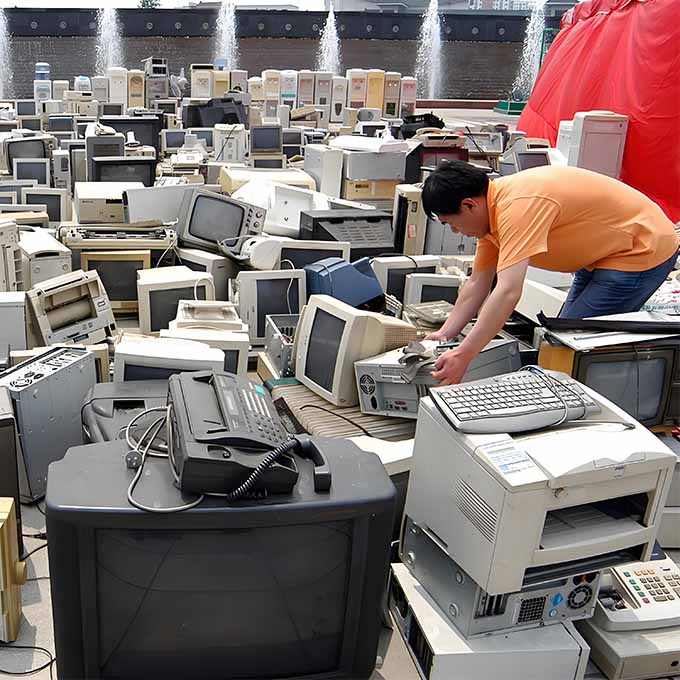
With the rapid popularization and upgrading of electronic products, the number of waste electrical appliances is constantly increasing, and many of their components and materials are recyclable. Therefore, the dismantling and recycling of waste electrical appliances has become a very important environmental protection work. Below is an introduction to the process flow of dismantling and recycling waste electrical appliances. Circuit board disassembly, heavy metal recycling, electrical disassembly, fluorescent powder, PCB circuit board
1、 Sampling and preparation
The first step in dismantling and recycling waste electrical appliances is to obtain materials and prepare them. In the sampling stage, some conventional waste appliances can be selected, such as mobile phones, tablets, televisions, etc. In the preparation stage, some tools such as electric drills, chainsaws, cutting machines, etc. can be used to disassemble waste electrical appliances.
2、 Classification
After dismantling, classify the recyclable materials and label them accordingly. The classification of waste electrical appliances mainly includes batteries, circuit boards, screens, metal casings, plastic casings, and other aspects. Because these components have different materials and uses, they need to be classified according to different materials. When classifying, attention should be paid to operations to avoid environmental impact, such as separating the harmful substances inside waste electrical appliances and strictly prohibiting mixing.
3、 Dismantling
Disassembling waste electrical appliances is also a technical task. Be careful when disassembling batteries to avoid accidents such as fires; For circuit boards, careful handling is necessary to avoid the release of toxic substances; For the casing, special care should be taken to avoid the release of toxic gases. In dismantling, it is necessary to use some professional equipment, such as metal cutting machines, ovens, etc.
4、 Recycling
After dismantling, the dismantled materials need to be recycled. Due to the large amount of recycled materials, the recycling methods are also different. For example, metals can be melted and cast, chemical waste can be chemically treated and degraded, plastics can be hot pressed, and so on. The recycled air and water should also be treated to ensure environmental safety.
5、 Processing
There may be some toxic or hazardous substances in waste electrical appliances that need to be treated, such as enameled wires, mercury lamps, flammable chemicals, etc. These substances require special treatment before they can be safely recycled and used. When dealing with it, it is necessary to choose a method that is more in line with national environmental protection requirements, and to carry out standard treatment and management to avoid secondary pollution to the environment.
6、 Reuse
After the above steps, the recycled materials can be reused. For example, using high-temperature smelting, smelting, chemical methods, and other means to turn the metal part into recycled metal. Plastics, circuit boards, and other items with less pollution can be recycled and reused. This not only protects the environment, but also has good economic benefits.
In short, the dismantling and recycling of waste electrical appliances is a task that requires high attention and strict process procedures to be followed. Only when each of us pays attention to the environmental pollution caused by waste electrical appliances and takes them seriously, can we better protect our common home.

 Detailed explanation and introduction of the dismantling and recycling process for waste electrical appliances-Information-Jiangxi Mingxin
Detailed explanation and introduction of the dismantling and recycling process for waste electrical appliances-Information-Jiangxi Mingxin